Astronomers detect regular rhythm of radio waves, with origins unknown
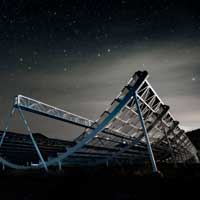 Signal from 500 million light years away is the first periodic pattern of radio bursts detected.
Signal from 500 million light years away is the first periodic pattern of radio bursts detected.
Jun 17th, 2020
Read more
 Subscribe to our Space Exploration News feed
Subscribe to our Space Exploration News feed
 Signal from 500 million light years away is the first periodic pattern of radio bursts detected.
Signal from 500 million light years away is the first periodic pattern of radio bursts detected.
Jun 17th, 2020
Read more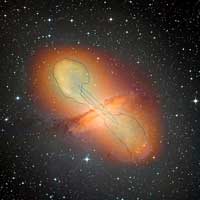 An international collaboration has shown that the very high-energy gamma-ray emission from quasars, galaxies with a highly energetic nucleus, is not concentrated in the region close to their central black hole but in fact extends over several thousand light-years along jets of plasma.
An international collaboration has shown that the very high-energy gamma-ray emission from quasars, galaxies with a highly energetic nucleus, is not concentrated in the region close to their central black hole but in fact extends over several thousand light-years along jets of plasma.
Jun 17th, 2020
Read more Mystery enshrouds the birth of swirls typical for supernova remnants like the Crab Nebula. A new 'supernova machine' may help solve it.
Mystery enshrouds the birth of swirls typical for supernova remnants like the Crab Nebula. A new 'supernova machine' may help solve it.
Jun 17th, 2020
Read more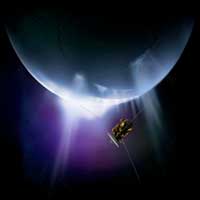 Instruments on-board future space missions are capable of detecting amino acids, fatty acids, and peptides, and even identify ongoing biological processes on ocean moons in our Solar System.
Instruments on-board future space missions are capable of detecting amino acids, fatty acids, and peptides, and even identify ongoing biological processes on ocean moons in our Solar System.
Jun 16th, 2020
Read more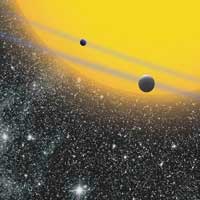 There may be as many as one Earth-like planet for every five Sun-like stars in the Milky way Galaxy, according to new estimates by astronomers using data from NASA's Kepler mission.
There may be as many as one Earth-like planet for every five Sun-like stars in the Milky way Galaxy, according to new estimates by astronomers using data from NASA's Kepler mission.
Jun 16th, 2020
Read more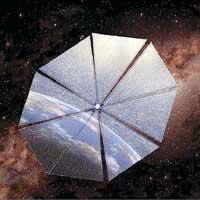 Light exerts a certain amount of pressure onto a body: sun sails could thus power space probes in the future. However, when light particles hit an individual molecule and knock out an electron, the molecule flies toward the light source. Atomic physicists have now observed this for the first time, confirming a 90 year-old theory.
Light exerts a certain amount of pressure onto a body: sun sails could thus power space probes in the future. However, when light particles hit an individual molecule and knock out an electron, the molecule flies toward the light source. Atomic physicists have now observed this for the first time, confirming a 90 year-old theory.
Jun 15th, 2020
Read more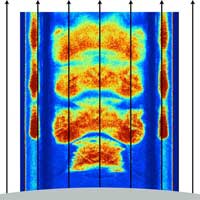 Intense radio emissions produced by the fast-spinning stars are caused by newborn particles interacting with powerful electromagnetic fields, new plasma simulations suggest.
Intense radio emissions produced by the fast-spinning stars are caused by newborn particles interacting with powerful electromagnetic fields, new plasma simulations suggest.
Jun 15th, 2020
Read more Is there anyone out there? This is an age-old question that researchers have now shed new light on with a study that calculates there could be more than 30 intelligent civilizations throughout our Galaxy. This is an enormous advance over previous estimates which spanned from zero to billions.
Is there anyone out there? This is an age-old question that researchers have now shed new light on with a study that calculates there could be more than 30 intelligent civilizations throughout our Galaxy. This is an enormous advance over previous estimates which spanned from zero to billions.
Jun 15th, 2020
Read more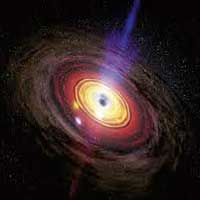 Like most galaxies, the Milky Way hosts a supermassive black hole at its center. Called Sagittarius A*, the object has captured astronomers' curiosity for decades. And now there is an effort to image it directly.
Like most galaxies, the Milky Way hosts a supermassive black hole at its center. Called Sagittarius A*, the object has captured astronomers' curiosity for decades. And now there is an effort to image it directly.
Jun 12th, 2020
Read more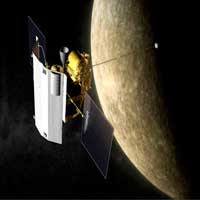 Scientists have found a way of measuring neutron lifetime from space for the first time - a discovery that could teach us more about the early universe.
Scientists have found a way of measuring neutron lifetime from space for the first time - a discovery that could teach us more about the early universe.
Jun 12th, 2020
Read more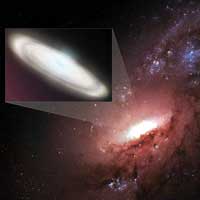 A new set of precision distance measurements made with an international collection of radio telescopes have greatly increased the likelihood that theorists need to revise the 'standard model' that describes the fundamental nature of the Universe.
A new set of precision distance measurements made with an international collection of radio telescopes have greatly increased the likelihood that theorists need to revise the 'standard model' that describes the fundamental nature of the Universe.
Jun 11th, 2020
Read more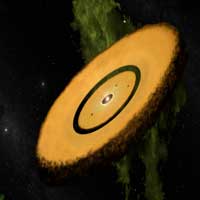 New research has revealed how long-lived Peter Pan discs form, which could provide new insights into how planets arise.
New research has revealed how long-lived Peter Pan discs form, which could provide new insights into how planets arise.
Jun 11th, 2020
Read more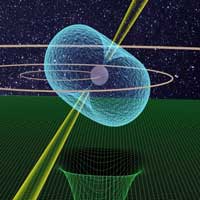 Radio astronomers use a dance of three exotic stars to test the universality of free fall.
Radio astronomers use a dance of three exotic stars to test the universality of free fall.
Jun 10th, 2020
Read more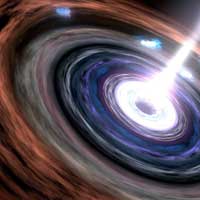 The first confirmed heartbeat of a supermassive black hole is still going strong more than ten years after first being observed.
The first confirmed heartbeat of a supermassive black hole is still going strong more than ten years after first being observed.
Jun 10th, 2020
Read more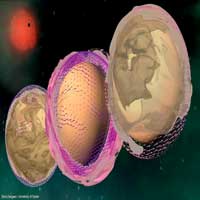 Scientists have expanded our understanding of potentially habitable planets orbiting distant stars by including a critical climate component - the presence of airborne dust.
Scientists have expanded our understanding of potentially habitable planets orbiting distant stars by including a critical climate component - the presence of airborne dust.
Jun 9th, 2020
Read more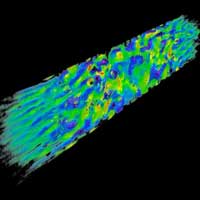 In experiments, researchers found new details about how supernovas boost charged particles to nearly the speed of light.
In experiments, researchers found new details about how supernovas boost charged particles to nearly the speed of light.
Jun 9th, 2020
Read more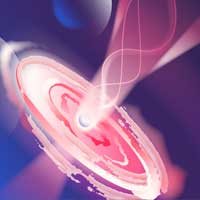 Astronomers have studied more than 300 quasars - spinning black holes that produce beams of plasma. The team has found that the shape of these so-called astrophysical jets changes from parabolic to conical at some distance from the black hole, reminiscent of the iconic flared jeans of the '70s.
Astronomers have studied more than 300 quasars - spinning black holes that produce beams of plasma. The team has found that the shape of these so-called astrophysical jets changes from parabolic to conical at some distance from the black hole, reminiscent of the iconic flared jeans of the '70s.
Jun 8th, 2020
Read more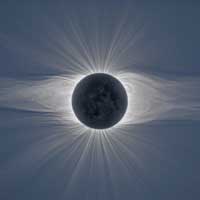 Observations from total solar eclipses are used to measure the shape of the Sun's magnetic field.
Observations from total solar eclipses are used to measure the shape of the Sun's magnetic field.
Jun 8th, 2020
Read more